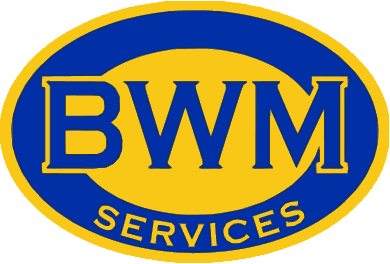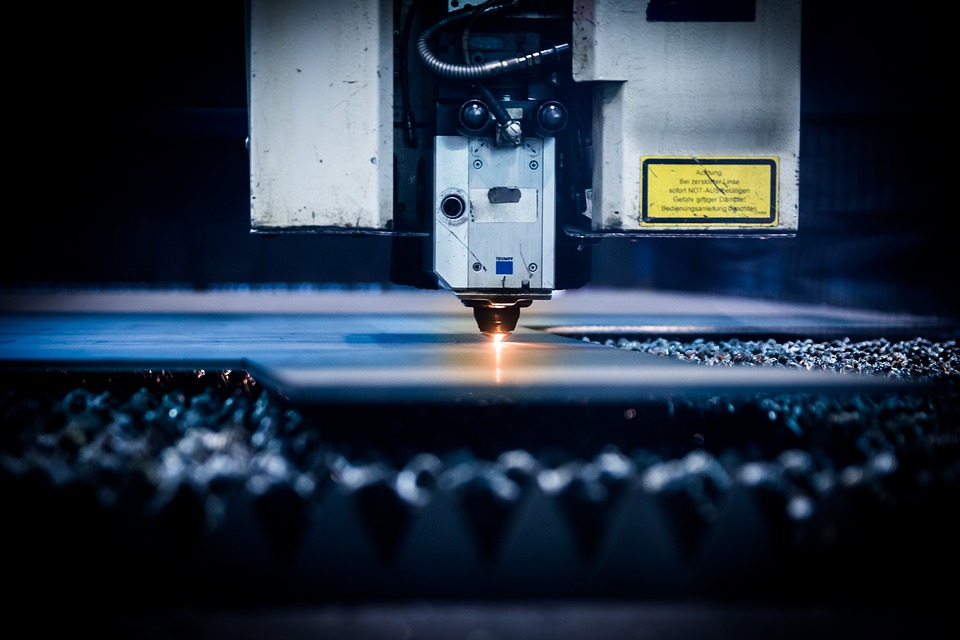Tips and Suggestions for Improving Plasma Arc Cutting Quality Issues
The most common complaints are in relation to the following:
- dross
- edge angularity
- material warpage
- changes to the metallurgy of the plasma cut edge
In addition, hole cutting is another challenge for many fabricators.
Tips for Dross
Dross
One of the most common plasma arc cutting quality issues is dross. When you hear of performing a secondary operation (grinding, chipping, sanding plasma cut parts), it is often to remove dross. This formation is dependent on numerous variables, including the following:
- cut speed
- standoff distance
- amperage
- voltage
- consumable condition
Additionally, the following all have an impact on the process:
- material being cut
- thickness and type
- grade
- chemical composition
- surface condition
- flatness
- temperature changes while cutting
Of these, the three most crucial variables when working to eliminate dross are cut speed, system amperage and standoff distance.
There is a “just right” speed when it comes to plasma arc cutting quality. Cut too slowly, and the plasma jet starts to look for more material to cut. Therefore, this results in low-speed dross. Conversely, cutting too quickly will cause the arc to trail behind the torch. This causes high-speed dross. Also, fast cut speeds in combination with a worn nozzle or too high of a standoff can result in a third type of dross called top-spatter dross. This is when a swirling flow of plasma flings molten material out in front of the kerf rather than down through it.
Low-Speed Dross
If molten material appears in a thick globular form along the bottom edge of the plate, you have low-speed dross. This can occur due to any of the following:
- cutting too slowly
- holding too low of a standoff
- setting your power supply at too high of an amperage
Performing the following actions can help to eliminate low-speed dross:
- Increase the cut speed in 5 in./min increments.
- Increase the torch standoff in 5-V increments.
- Decrease the amperage in 10-A increments.
- If none of these measures improve the cut, consider changing to a nozzle with a smaller orifice.
High-Speed Dross
High-speed dross is a small hard bead of uncut material or rollover dross along the bottom of the plate. This type of dross is harder to remove than its low-speed counterpart. As we mention above, high-speed dross is a result of cutting too fast. However, a high standoff or low amperage (for a given material thickness and cutting speed) can also cause it. This is because both changes cause a reduction in the energy of the plasma jet.
Performing the following actions can help eliminate high-speed dross:
- Increase your cutting nozzle for signs of wear.
- Decrease the cutting speed in 5-in./min increments.
- Decrease the standoff in 5-V increments.
- Increase the amperage (but do not exceed 95% of the nozzle orifice rating).
Top Spatter Dross
You may notice a light coating of re-solidified metal along the top surface of the plate. This is top-spatter dross.
Performing the following actions can help eliminate this:
- Inspect the nozzle for signs of wear.
- Decrease the cutting speed in 5-in./min increments.
- Decrease the standoff in 5-V increments.
Dross Free Window
Between the two extremes of high- and low-speed dross is the “just right” window, or the dross-free zone. The dross-free zone is key to minimizing secondary operations on plasma cut pieces. Nitrogen and air plasma gasses have a relatively narrow dross-free window on carbon steel. However, oxygen plasma has a wider window.
There are a couple of things you can try to find this optimum speed for plasma arc cutting quality. These include:
- Make a series of test cuts at various speeds of plasma arc cutting quality. Then, select the speed that produces the cleanest cut. Lag lines (small ridges in the surface of the cut) are a good way to judge your cutting speed. When you are cutting too slow, you’ll notice lag lines that are perpendicular to the plane of the plate. Conversely, when cutting too fast, you will notice slanted s-shaped lag lines that run parallel to the plate along the bottom edge.
- Watch the arc (wearing appropriate eye protection) during the cut. Then, dynamically alter the speed to produce the optimum arc characteristics. To do this, observe the angle of the arc as it exits the bottom of the work piece. If you are cutting with air plasma, the arc needs to be vertical as it exits the bottom of the cut. With nitrogen or argon/hydrogen, a slight trailing arc is ideal, while a slight leading arc is ideal with oxygen.
Lastly, when it comes to dross, refer to the owner’s manual that came with your cutting system. Plasma cutting engineers speed months in a lab experimenting with a variety of parameters to create comprehensive cut charts listing recommendations for cut speeds, cut heights and amperages for many material types and thicknesses.
Edge Angularity
Another common issue among fabricators is edge angularity. The shape of a plasma arc is similar to a flame from a candle — tapered to at the top and bottom. Therefore, any metal cut with plasma will have some degree of angularity. Plasma arc cutting quality engineers work hard to design torches and consumables with minimal angularity. In addition, they make sure that angularity is consistent around the perimeter of the part. Typically, cutting slowly minimizes edge angularity. Therefore, manufacturers generally recommend speeds that are the lowest at which you can cut without causing low-speed dross.
Here’s a few tips on how to lessen edge angularity.
- Match consumables and power level to material thickness keeping in mind that lower power and slower cut speeds equal less edge angularity.
- Inspect your consumables, particularly the nozzle and shield orifice, for damage.
- Use the correct cut height (0.005 in. for high definition and + 0.010 in for conventional or air plasma) after the pierce and throughout the entire cut.
Material Warpage
If you follow the suggested power and cut speed specifications in your owner’s manual, this can help control material warpage during plasma cutting. As a rule, faster cut speeds impart less heat into the material. This produces less heat-induced material warpage. There are a few suggestions for controlling material warpage, which include the following:
- Use your CAM software to create cut paths that control the heat input by allowing sections to cool before cutting adjacent parts. This is particularly useful when cutting very thin material.
- Use the lowest power level and consumables as well as the fasted possible cut speed.
- If you have a water table, keep the water in contact with the material. Remember, on many materials, water can affect smoothness, and in some scenarios, edge hardness (hydrogen embrittlement).
Edge Metallurgy
All of the materials cut with plasma will show metallurgical effects on the edges. Luckily, selecting the correct gases for the material you are cutting can lessen these effects.
On most carbon steels, oxygen plasma produces the best edge metallurgy. Utilizing an oxygen plasma and oxygen shield gas process is particularly beneficial when cutting holes less than 2.5-in. diameter. Therefore, hole edges are almost unaffected by the plasma arc cutting quality process. In fact, the metallurgy effects are so minor, this process is typically suitable for thread tapping. Additionally, parts cut with oxygen are 100% weldable and machinable, and rarely crack during forming operations. Air or nitrogen plasma does cause some edge hardening and nitriding on most steels. This can make edges brittle and create porosity during some welding processes. However, this nitride layer is usually thin— between 0.006 or 0.010 in. thick — and easy to remove.
We recommend a mix of gases for stainless steel. It is possible to cut stainless less than a ¼ in. in thickness with a very pure edge utilizing a 5% hydrogen/95% nitrogen mix for the plasma gas. Thicker stainless sections often do better when cut utilizing a 35% hdyrogen/65% argon mix. Regardless of thickness, a nitrogen shield gas is recommended. Another option is to cut stainless underwater utilizing nitrogen for both the plasma and shielding gas. Therefore, this eliminates the oxide layer that forms when cutting in ambient air.
- Utilize oxygen for your plasma gas if your system support it for the best edge metallurgy on carbon steel.
- Utilize a mixture of gases dependent on material thickness when cutting stainless steel.
- Always utilize a nitrogen shielding gas on stainless, regardless of thickness.
Holes
While the above tips will improve cut quality on most parts and shapes, hole cutting requires a bit more work. The rule of thumb—whether utilizing air or an oxygen-based, high-definition system—is that the hole diameter cannot be smaller than the thickness of the plate. For instance, a ½ in. or larger hole on a 9½-in. plate. However, even when following this rule, operators often struggle with out-of-round and/or tapered holes, in which the top of the hole is larger than the bottom.
The good news is that it is possible to cut a round hole with plasma. As far as the taper, air plasma will always produce a hole with some natural, albeit very little, taper. This is because of the lagging arc angle from the plasma jet. Conversely, high-definition plasma will produce a nearly nonexistent taper. The following are the factors to consider when cutting holes.
Pierce Height
Pierce the plate at the recommended cut height and utilize the pierce delay time found in your owner’s manual. This will prevent, or at the very least decrease, metal blowback on your torch shield and nozzle orifice.
Lead-In
Begin your lead-in close to the center of the hole rather than the radius. Piercing and beginning your lead-in in the center causes the divot to occur in the metal being cut away rather than along the edge (radius) of the hole. Beginning in the center also gives the arc more time to stabilize itself during ramp-up and gives the torch height control more time to index down to cut height before reaching the radius. Most machines can produce excellent holes when lead-in shapes are straight and perpendicular to the hole. However, more sluggish machines will benefit from the use of a radial or curved lead-in.
Arc Shut-Off
Ideally, you want the arc to stop or shut off at the 360-deg position on the hole contour or, even better if your CAM software allows it, past the 360-deg lead-in kerf. Some software can shut off the plasma arc at the lead-in kerf crossing while keeping the motion active. This is the best option because it allows for a smoother end-of-cut transition and a minimal divot when the arc turns off.
Cut Speed
The cut speed needs to be about 60% of the speed you use to cut the outside contour of the part. This cut speed adjustment will create some low-speed dross. However, it ensures minimal hole danger.
Cut Height
When cutting holes less than 1¼ in. in diameter, it is ideal to disable the arc voltage control and voltage height correction. Instead, enable the pierce height and the indexing-to-cut height feature. We recommend this because the slower speed for cutting holes will cause the arc voltage control to move the torch too close to the plate.
Use Anti-Spatter Welding Spray
Spraying a water-based, anti-spatter welding spray onto the plate and front of your torch will generally eliminate the spatter that can occur when piercing and keep spatter off the shield and nozzle.
Consumable Selection
Utilize 45-A shielded consumables for cutting material thicknesses between 3/16 and 3/8 of an in., and 65-A consumables for material thicknesses between 3/8 and 5/8 of an in. Utilizing higher power levels and consumables will create more taper in holes.
Your specific system will impact your result to a significant degree. This is because the process capability between plasma and table manufacturers varies widely. This variation is particularly pronounced when utilizing a light industrial or entry-level CNC table. The differences in the type of torch height control, CAM software and acceleration capabilities can significantly impact your result. Nonetheless, the above tips and suggestions are sure to improve cut quality and hole shape for anyone using plasma.
These are just a few tips for plasma arc cutting quality. For more information about our plasma arc cutting quality process and services here at BWM Services, contact us with the link below.
Source: aws.org


